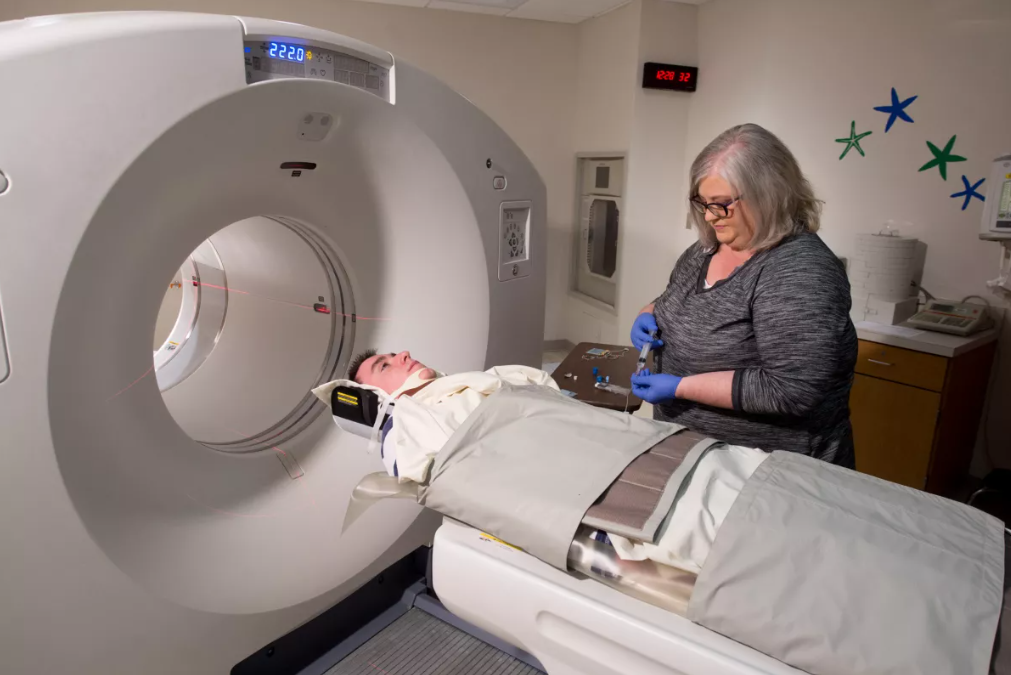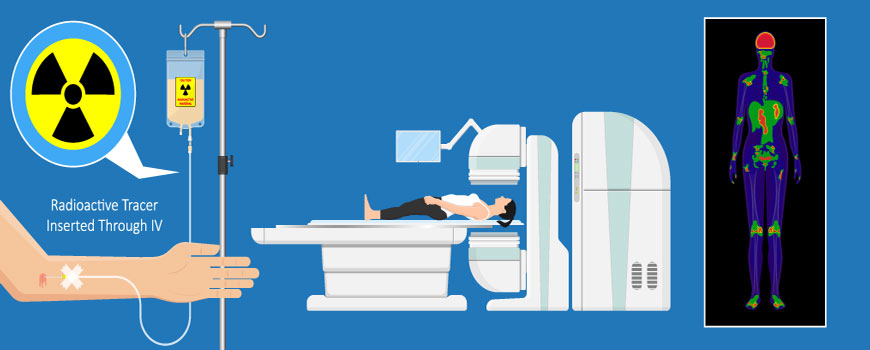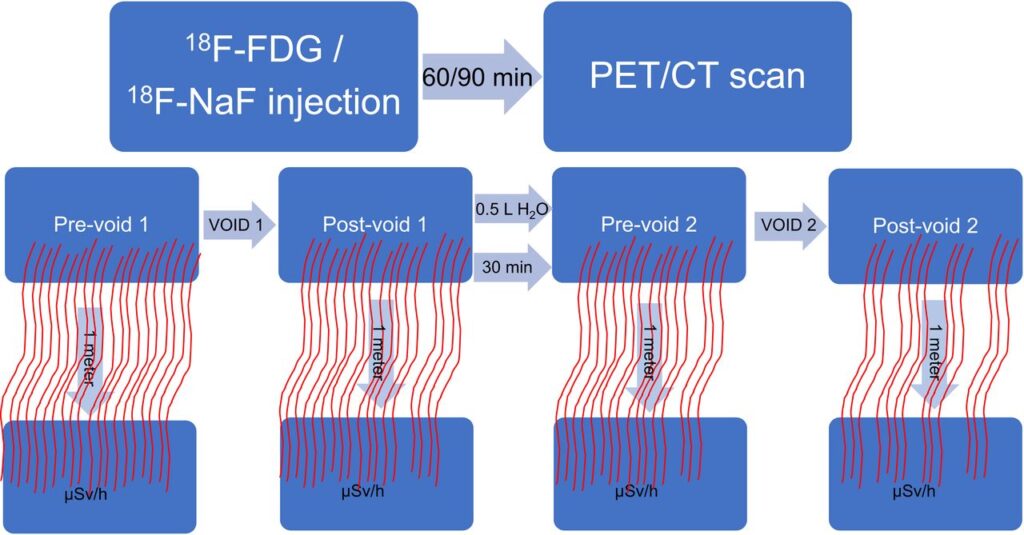When your doctor orders a PET scan, the medical benefits are clear. But once you get home, family members might start asking uncomfortable questions about the PET Scan radiation exposure to family.

Should they keep their distance? Is it safe to hug the kids? These concerns stem from a fundamental misunderstanding about how medical imaging works and what actually happens to your body during the procedure.
The Root of Family Fears
People worry about PET scan radiation for several interconnected reasons. The word “radiation” itself carries heavy emotional baggage, conjuring images of nuclear disasters and cancer risks. Most families have no frame of reference for understanding medical radiation versus the dangerous types they’ve heard about in news stories.
Social media and internet forums amplify these fears. One person shares a story about being told to “stay away from pregnant women” after their scan, and suddenly, dozens of others assume this applies to everyone in every situation. The medical community sometimes contributes to confusion by giving overly cautious advice without proper context.
Cultural factors play a role, too. In many families, protecting children and pregnant members takes precedence over everything else. When medical staff mention any precautions at all, families often interpret this as “extremely dangerous” rather than “minor precaution.”
The invisible nature of radiation makes it more frightening. You can’t see, smell, or feel it, which makes it seem more mysterious and threatening than it actually is.
What Actually Happens During a PET Scan
A PET scan uses a small amount of radioactive sugar called fluorodeoxyglucose (FDG). This substance has a very short half-life, meaning it loses its radioactivity quickly. Within hours, most of the radioactive material has either been eliminated from your body through normal biological processes or has naturally decayed to harmless levels.
The amount of radiation involved is relatively small. To put this in perspective, the radiation exposure from a typical PET scan is roughly equivalent to what you’d receive from natural background radiation over two to three years. This is significantly less than many people assume.

Your body doesn’t become a long-term source of dangerous radiation. The radioactive tracer is designed to be temporary and localized. Unlike nuclear accidents or radiation therapy, PET scans don’t make you radioactive in any meaningful sense that would endanger your family.
Common Myths and Realities
Myth: You’re dangerous to be around for weeks after a PET scan.
Reality: Most radioactivity clears within 24 hours. After this period, you pose no risk to family members.
Myth: Pregnant women and children must avoid you completely.
Reality: Standard precautions involve minimal distance for a short time. Complete avoidance is unnecessary and often represents an overcautious interpretation of medical guidelines.
Myth: Your clothes, personal items, and living spaces become contaminated.
Reality: The radioactive material stays within your body and exits through normal waste processes. Your belongings don’t become radioactive.
Myth: Multiple PET scans make you increasingly dangerous to others.
Reality: Each scan is independent. Previous scans don’t make subsequent ones more hazardous to family members.
Myth: Pets and household plants can be harmed by your presence.
Reality: The minimal radiation exposure poses no threat to animals or plants in your home.
Myth: You need special disposal methods for waste products.
Reality: Normal toilet facilities are adequate. No special handling is required.
Precautionary Principle
Medical professionals operate under the ALARA principle: As Low As Reasonably Achievable. This means they recommend precautions that go beyond what’s strictly necessary to ensure maximum safety.
When a technician suggests avoiding close contact with pregnant women for 24 hours, this doesn’t mean you’re dangerous – it means they’re being extra careful.

These precautions are based on theoretical calculations rather than documented cases of harm. No studies have shown actual injury to family members from normal contact after PET scans. The recommendations exist to eliminate even the smallest theoretical risk.
The medical community has learned that giving detailed explanations about radiation levels and half-lives often confuses patients more than it helps. Simple precautionary statements are easier to follow, but they can inadvertently create more fear than necessary.
Practical Guidelines for Families
For the first 24 hours after a PET scan, some simple steps provide peace of mind without disrupting family life. Maintain normal distance during conversations – about three feet works fine. Avoid prolonged close contact like extended cuddling sessions or sleeping in the same bed.
Pregnant family members and small children deserve slightly more caution, not because they’re in danger, but because their developing systems are theoretically more sensitive to any radiation exposure. This means avoiding activities like lengthy bedtime story sessions where you’re in very close contact for extended periods.
Normal daily activities like eating meals together, watching television in the same room, and casual conversation pose no risks. You don’t need separate dishes, utensils, or towels. Standard hygiene practices are sufficient.
After 24 hours, all precautions can be dropped. The radioactive material has either been eliminated or decayed to insignificant levels.
Addressing Specific Family Concerns
Grandparents often worry most about grandchildren. The good news is that normal grandparent activities – brief hugs, reading stories, playing games – are safe immediately after a PET scan. Only extended close contact needs temporary modification.
Spouses frequently ask about sleeping arrangements. For one night, separate beds provide extra caution. This isn’t because sharing a bed is dangerous, but because it represents several hours of very close proximity.
Parents worry about school pickup, homework help, and bedtime routines. These activities can continue normally. The distance involved in most parent-child interactions already provides adequate spacing.
Working parents often ask about returning to office environments. Unless your job involves prolonged close contact with pregnant coworkers, normal work activities pose no concerns.
The Bigger Picture
PET scans save lives by detecting cancers and other serious conditions early. The medical benefits far outweigh any minimal risks to family members. Avoiding necessary medical care because of radiation fears can have serious health consequences that dwarf any theoretical risks from the scan itself.

Thousands of PET scans are performed daily without any documented cases of radiation harm to family members. The safety record speaks for itself.
Understanding these facts helps families make informed decisions rather than operating from fear. Medical procedures work best when patients can focus on their health rather than worrying about unfounded dangers to loved ones.
Frequently Asked Questions
How long should I wait before hugging my children?
Brief hugs are fine immediately. For extended cuddling sessions, wait 24 hours as an extra precaution.
Can I prepare food for my family right after the scan?
Yes. Normal food preparation poses no risks. The radioactive material doesn’t transfer through food handling.
Should my spouse sleep somewhere else?
For one night, separate sleeping arrangements provide extra caution. After 24 hours, normal sleeping arrangements are perfectly safe.
What about family pets?
Pets require no special precautions. Normal interaction is safe throughout the entire process.
Can I use the same bathroom as other family members?
Yes. Normal bathroom use is safe. The small amount of radioactive material that exits your body is quickly diluted and poses no risk.
How do I explain this to worried relatives?
Emphasize that PET scans are routine medical procedures with excellent safety records. The precautions are preventive measures, not responses to actual danger.
What if I need multiple PET scans?
Each scan is independent. Previous scans don’t increase risks to family members for subsequent procedures.
Should pregnant visitors stay away?
For 24 hours, pregnant visitors might prefer to limit their visit duration, but brief visits pose no documented risks.
The key to managing family concerns about PET scan radiation lies in understanding the difference between theoretical caution and actual danger.
While some basic precautions make sense, the procedure doesn’t transform you into a hazardous person who endangers loved ones. Families can maintain their normal routines with minor, temporary modifications that provide peace of mind without disrupting daily life.
